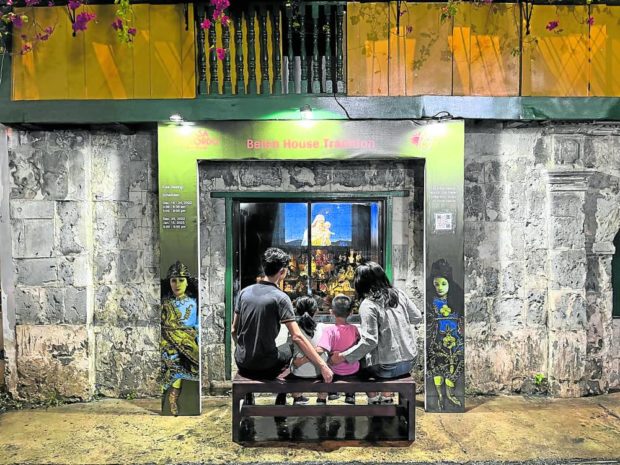The belen or Christmas creche is the central figure in many Catholic and Christian homes during the holidays. They can be as simple as a few paper cutouts mounted on board, or as elaborate as the life-size figures found in larger homes and some retail centers.
Greenhills Shopping Center used to have one that spanned several meters and featured a cast of dozens, both human and animal. You entered one end of a darkened corridor and were treated to a night sky and a detailed tableau arranged in subtle tiers. The figures nearer the path were larger, while those farther away were appropriately smaller. At the midpoint was the belen with the Holy Family surrounded by the three wise men and their camels, the shepherds and their flocks.
The belen tradition at Casa Gorordo Museum in Cebu is smaller in scale but charming and insightful nonetheless. Instead of focusing on the Nativity, a total of 12 scenes from the Old and New Testament are displayed on tiers.
In the past, the museum’s collection used to be set up at the second floor so visitors could view them up close, but this year, they’re trying something new. Starting Dec. 16, passersby can peer through one of the museum’s windows on the street level on their way to Simbang Gabi. It will be on view until early January.
The 12 vignettes include Adam and Eve after they have partaken of the fruit, Cain standing over his dead brother Abel, and Abraham and his bound son Isaac. There’s even one with David and Bathsheba, and King Solomon with the two mothers, one of them carrying her dead infant child. Tableaux from the New Testament are less gory and include the Annunciation, the Visitation and Mary and Joseph’s flight into Egypt.
Ivory hands and faces
The pieces were accumulated throughout the years when the Gorordos still lived in the ancestral house located in Cebu’s Parian area. Many of them are made of crudely painted plaster, but a few of the figures from the 1800s—like those in the Nativity and the Visitation—have faces and hands carved out of ivory. Their garments are also more opulent, made of felt-like fabric and trimmed with gold thread.

presentation of Jesus in the temple.
“The Gorordo Belen collection vividly narrates the story of Christ’s Nativity … and connects the coming of the Messiah with passages from the Old Testament,” reads the material provided by the museum.
The different scenes were a way for the older generation to tell the younger ones stories from the Bible. “The labor put into creating a belen … was a learning process in itself. Children were made to ‘rediscover’ Judaeo-Christian culture as they assembled figures and landscapes,” one reads in the exhibit notes.
Setting up the belen is a tradition that the Gorordo family requested the Ramon Aboitiz Foundation Inc. to continue when the latter acquired the house from the family in 1979. Next year marks the 30th anniversary since Casa Gorordo was opened to the public as a museum. INQ
Casa Gorordo Museum is at 35 E. Aboitiz St., Cebu City 6000 Philippines. Open from Monday to Saturday, 9 a.m. to 5 p.m.
The Birth of Christ is one of the more opulent vignettes, and features images with faces and hands carved from ivory.

